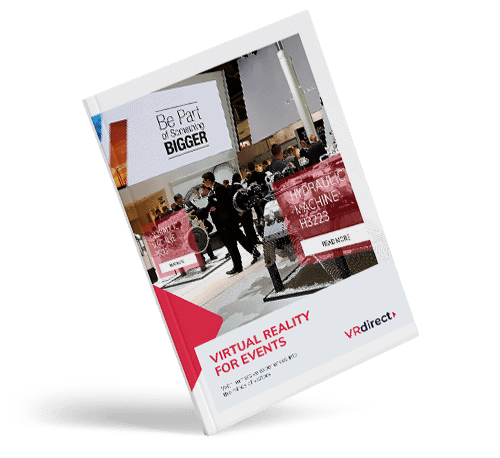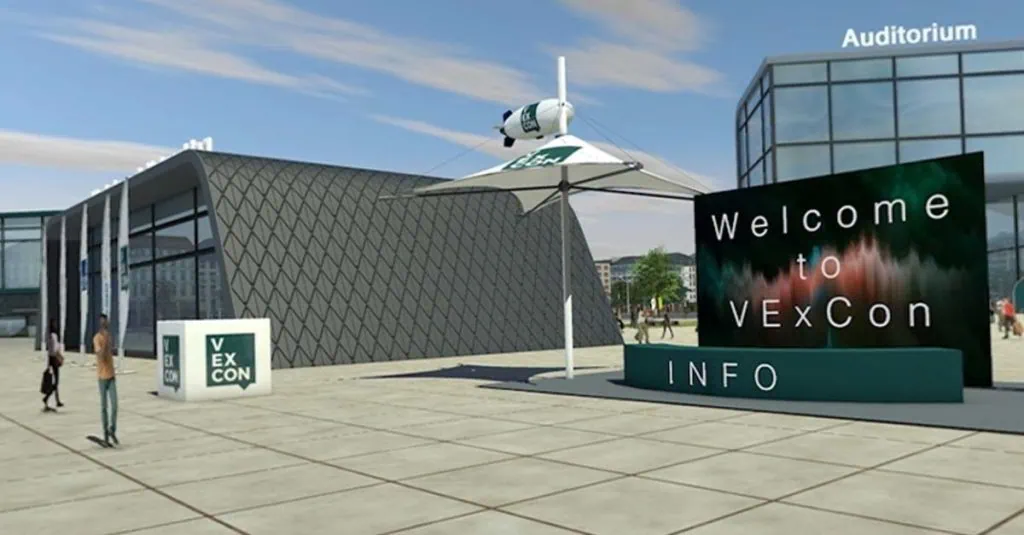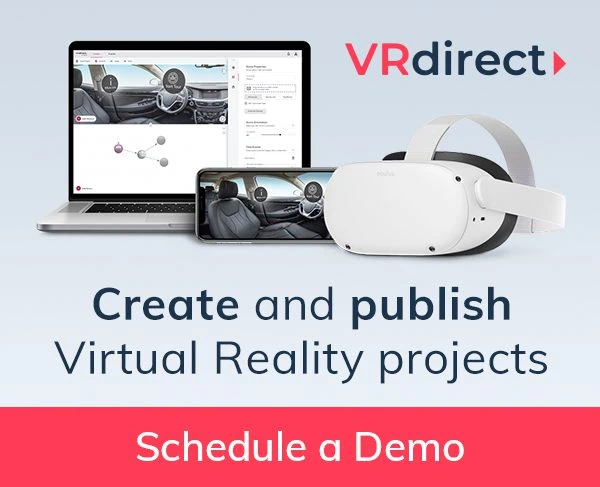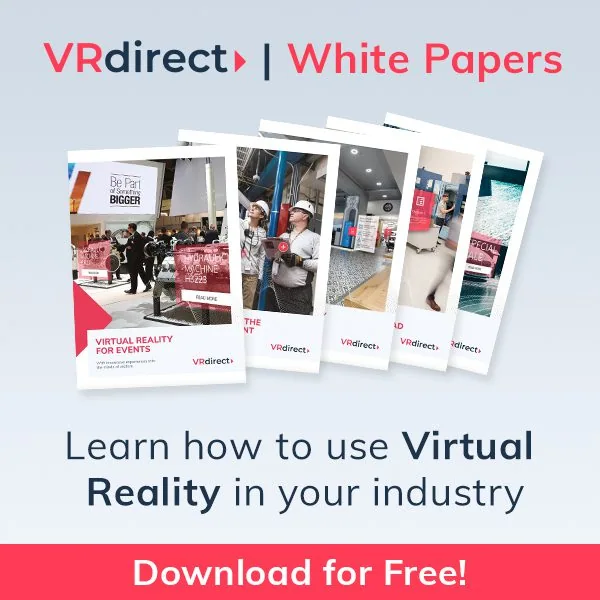As we know Virtual Reality (VR) is a unique technology. Unlike standard user interfaces, it immerses the user in an experience. And the VR devices make the experience more tangible and life-like. Today, it is possible to interact with the 3D environment and experience an alternate realm, thanks to VR. Currently, VR games and VR content are two industries leading the curve.
However, VR technology is beyond the world of games and entertainment. A range of other industries are leveraging VR solutions. Although it is exciting to see someone grasp items that do not exist in our physical reality, its practical applications touch upon possibilities that no other tech has achieved since the internet. For instance, VR exhibitions play a crucial part in the event management sector. Be it exhibitions, business expos, or concerts, VR is helping create a more memorable and engaging event experience. So let’s delve straight into how Virtual Reality is changing the event space, starting with use cases.

Read our Whitepaper “How to improve the customer experience at events with Virtual Reality.”
Common Uses of Virtual Reality in Events
Conducting immersive virtual events
Of course, the foremost advantage of VR technology is in organizing events for businesses. Even though online events have some benefits, immersive VR events are a complete game-changer. The possibility to interact in an alternate reality is something that users love.
The use of VR in Expos facilitates guests with immersive and engaging experiences. Web-based events are criticized for being alienating and anti-social, but this is not the case with virtual events. Instead, VR may help attendees feel more connected and involved while making it possible to communicate in real-time.
For example, the famous Louver museum held a VR experience in Paris for its Leonardo da Vinci blockbuster exhibition. The Event’s interactive design, animation, and sound allowed visitors to explore Renaissance paintings. The VR experience became the highlight of the event.
Better communication channel
When it comes to virtual events, networking plays a significant role. According to reports, one of the main reasons individuals attend events is networking. With the introduction of services like VRChat and Facebook’s (now Meta) integration with Oculus headsets, VR has an added advantage to make virtual networking more participatory and engaging.
Regular networking sessions have been changed into sequential VR experiences, ranging from speed networking to introductory games. Hence, today, an ever-growing number of event organizers are not shying away from using VR devices to offer virtual networking an additional dimension.
Visits to venues
Ever thought of visiting a location without actually traveling there? Well, that is a virtual venue for you. Virtual location tours are time-savvy for event organizers, especially as in-person events are making a comeback and hybrid events are gaining traction.
Moreover, virtual visits are an ideal approach during times as disruptive as the ongoing pandemic where many nations are still struggling with the wave of different COVID-19 variant outbreaks. VR allows businesses to adhere to social distancing protocols and stay safe without taking a hit on their revenue streams.
Take the use case of The Washington Post. The American news company created an immersive walking tour of the street art in Manhattan launched for their online readers. How about you take a virtual art museum tour now? Here is a virtual art museum created using VRdirect’s intuitive VR solution.

Read our Success Story:
How Xing Events uses Virtual Reality to attract visitors and strengthen customer relations.
Advantages of Virtual Reality for Exhibitions
Real-time demonstration of products
The use of VR in Expos presents businesses with opportunities to showcase a wide range of items, their functionality, and possible benefits for customers while saving money and resources on hiring locations for product displays. In addition, the VR exhibition concept can be highly beneficial for the industrial goods and automobile sector to exhibit heavy-duty machinery or vehicles without incurring the transportation cost.
Event planners may also provide audiences a virtual demonstration of the product, allowing them to utilize it to examine how it works and make a purchasing choice. It applies to both virtual and physical events.
Venue evaluation
Selecting a venue for exhibitions will become a hassle-free process for event managers with VR applications. One doesn't need to travel from one place to another searching for an ideal location with a suitable space, size, and facilities.
For instance, a VR app for venue evaluation by the International Convention Center Sydney provides a real-like virtual tour of the halls and rooms from any smart device. Hence, it enables managers to choose the best spot for their expo.
Leveraging VR solutions for venue evaluation will ultimately save both time and cost for businesses.
Builds brand identity
Virtual event displays have a longer lifespan than regular trade fairs. Physical trade exhibitions are limited to a day or two, but virtual trade shows can go as long as the organizer desires. As a result, guests stay connected to the business for a prolonged period.
When it comes to land-based trade events, people usually forget them once they end. On the other hand, visitors at virtual trade shows may access the same information on demand, leading to improved brand awareness. Many organizations even launch their VR-enabled apps so users can easily access their products anytime and from anywhere.
Boosts sales
VR provides the most realistic experience of a product and service. Visitors are considerably more inclined to buy the product in actual situations after seeing it in virtual reality. As a result, you will receive more high-quality leads that you may convert into consumers.
Your guests will understand what to expect when entering a virtual world if you conduct a VR Experience in an exhibition. It cuts down the time required to understand the functioning and settings of products on display. And instead, people can spend more time admiring the goods than being baffled by the information.
Besides, the visitor can see the experience on the screen displays installed on the event booths. If it does not stir their interest, they will leave without bothering the sales reps, saving time and energy while catering to potential customers.
Contributes to environmental protection
Compared to onsite events, virtual reality is a far more environment-friendly affair. Physical events may have a significant environmental impact, particularly on waste generation and increased carbon footprint. But a Virtual Reality exhibition has a minimal adverse effect on the environment because it removes the need for transportation to travel to the venue. Instead, you can visit any exhibition venue from the comfort of your home or workplace.
Garners more attention globally
A Virtual Reality exhibition has the added benefit of being available from anywhere on the planet. It means your services or products will have a worldwide reach without incurring the high costs of attending international trade shows.
But let’s talk about the elephant in the room, the cost of creating a VR experience. The cost of VR events may vary depending on the level of immersion you want to produce. A fully immersive VR 3D experience tailored to your brand or product may cost more, need expert skills, and need development time. But then you have platforms such as VRdirect which are already making things economical, faster, and a lot easier for event organizers and businesses worldwide to make the most out of their VR event plans with minimal fuzz. Here’s a short demo of how VRdirect allows creating VR events.
Bottom Line ...
While Virtual Reality developers are still working on the complete immersion bit, VR events are already making headlines. So whether you are pro-VR or anti, it is bound to integrate into our everyday lives. And the rapidly decreasing cost of VR devices will inevitably lead to more adoption in the coming times. So rather than resisting, it is better to embrace it as early as possible. And the event industry seems to have taken a head start.
But it appears VR event business will require two things for full fruition; support of other technologies such as a complete 5G adoption worldwide and creative minds who can tap into VR’s many capabilities to come up with innovative ways to augment event experience.





